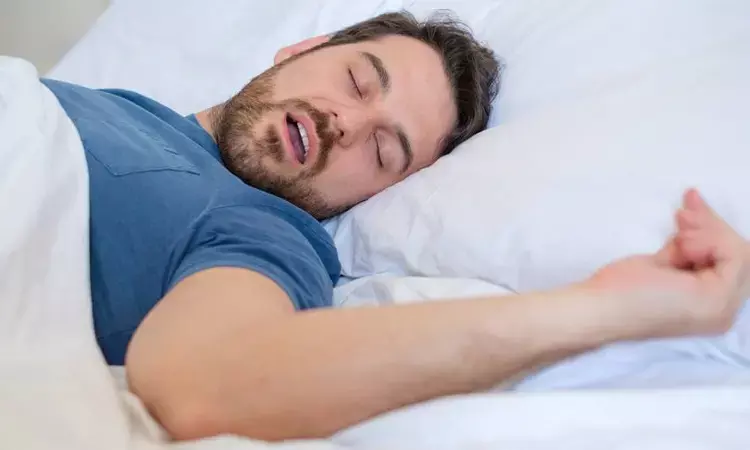- Home
- Medical news & Guidelines
- Anesthesiology
- Cardiology and CTVS
- Critical Care
- Dentistry
- Dermatology
- Diabetes and Endocrinology
- ENT
- Gastroenterology
- Medicine
- Nephrology
- Neurology
- Obstretics-Gynaecology
- Oncology
- Ophthalmology
- Orthopaedics
- Pediatrics-Neonatology
- Psychiatry
- Pulmonology
- Radiology
- Surgery
- Urology
- Laboratory Medicine
- Diet
- Nursing
- Paramedical
- Physiotherapy
- Health news
- Fact Check
- Bone Health Fact Check
- Brain Health Fact Check
- Cancer Related Fact Check
- Child Care Fact Check
- Dental and oral health fact check
- Diabetes and metabolic health fact check
- Diet and Nutrition Fact Check
- Eye and ENT Care Fact Check
- Fitness fact check
- Gut health fact check
- Heart health fact check
- Kidney health fact check
- Medical education fact check
- Men's health fact check
- Respiratory fact check
- Skin and hair care fact check
- Vaccine and Immunization fact check
- Women's health fact check
- AYUSH
- State News
- Andaman and Nicobar Islands
- Andhra Pradesh
- Arunachal Pradesh
- Assam
- Bihar
- Chandigarh
- Chattisgarh
- Dadra and Nagar Haveli
- Daman and Diu
- Delhi
- Goa
- Gujarat
- Haryana
- Himachal Pradesh
- Jammu & Kashmir
- Jharkhand
- Karnataka
- Kerala
- Ladakh
- Lakshadweep
- Madhya Pradesh
- Maharashtra
- Manipur
- Meghalaya
- Mizoram
- Nagaland
- Odisha
- Puducherry
- Punjab
- Rajasthan
- Sikkim
- Tamil Nadu
- Telangana
- Tripura
- Uttar Pradesh
- Uttrakhand
- West Bengal
- Medical Education
- Industry
Multi-night monitoring with wearables helps in proper diagnosis of Sleep Apnea

According to recent research, the severity of obstructive sleep apnea (OSA) can fluctuate significantly from night to night, which may have crucial consequences for diagnosis and therapy.
This study was conducted by Bastien Lechat and team with the objective to assess OSA prevalence from multi-night in-home recordings, as well as the impact of night-to-night variability in OSA severity on diagnostic classification in a large, global, non-randomly selected community sample drawn from a consumer database of people who purchased a novel, validated, under-mattress sleep analyzer.
The findings of this study are published in the American Journal of Respiratory and Critical Care Medicine.
Data using innovative, noninvasive under-mattress sensor technology collected during at least 8 months of in-home nightly monitoring in a large, non randomly selected population sample from 20 countries/regions reveal a global incidence of moderate to severe OSA of [about] 20%. Misdiagnosis probability based on a single night of testing, as is currently standard clinical practice, was high in the current selected population sample at [approximately] 20% and increased to [approximately] 50% in people with mild to moderate OSA.
Researchers looked at 67,278 people aged 18 to 90 years old (mean age 47 years; 78 percent were men; 62 percent were from Europe) from a large, worldwide nonrandomly selected community sample from a consumer database of unique, verified, under-mattress sleep analyzer purchases. The Withings Sleep Analyzer's under-mattress sleep sensor technology includes pneumatic and acoustic sensors that can detect body movement, heart rate, respiratory rate, snoring, and breathing stoppage events. From July 2020 to March 2021, all participants received in-home nightly surveillance for an average of 170 nights. The researchers looked at the multi-night worldwide prevalence of OSA as well as the risk of misclassification based on a single-night apnea-hypopnea index (AHI) score. OSA was characterized as an AHI of more than 15 occurrences per hour on a nightly basis.
The key findings are as follow:
1. The global prevalence of OSA was 22.6%. The chance of misdiagnosis in persons with OSA based on a single night varied from 20% to 50%.
2. Misdiagnosis error rates declined as monitoring nights increased (e.g., 1-night F1-score=0.77 vs. 0.94 for 14-nights) and remained constant after 14-nights of monitoring.
3. Conclusions Multi-night in-home monitoring with revolutionary non-invasive under mattress sensor technology reveals a global incidence of moderate to severe OSA of 20%, and that 20% of patients diagnosed with a single night study may have been misclassified.
In conclusion, findings of this study highlight the potential utility of noninvasive multi-night sleep and OSA assessments in the home to supplement current clinical diagnosis and management practices, which may provide cost effectiveness and greater access to care over current routine practice. Nonetheless, these findings do not rule out the use of gold-standard polysomnography in more complicated situations or in persons with significant or multiple comorbidities, when extra information on hypoxemia and OSA endotypes may be therapeutically justified and instructive.
Reference:
Lechat, B., Naik, G., Reynolds, A., Aishah, A., Scott, H., Loffler, K. A., Vakulin, A., Escourrou, P., McEvoy, R. D., Adams, R. J., Catcheside, P. G., & Eckert, D. J. (2021). Multi-night Prevalence, Variability, and Diagnostic Misclassification of Obstructive Sleep Apnea. In American Journal of Respiratory and Critical Care Medicine. American Thoracic Society. https://doi.org/10.1164/rccm.202107-1761oc
Medical Dialogues consists of a team of passionate medical/scientific writers, led by doctors and healthcare researchers. Our team efforts to bring you updated and timely news about the important happenings of the medical and healthcare sector. Our editorial team can be reached at editorial@medicaldialogues.in.
Dr Kamal Kant Kohli-MBBS, DTCD- a chest specialist with more than 30 years of practice and a flair for writing clinical articles, Dr Kamal Kant Kohli joined Medical Dialogues as a Chief Editor of Medical News. Besides writing articles, as an editor, he proofreads and verifies all the medical content published on Medical Dialogues including those coming from journals, studies,medical conferences,guidelines etc. Email: drkohli@medicaldialogues.in. Contact no. 011-43720751


